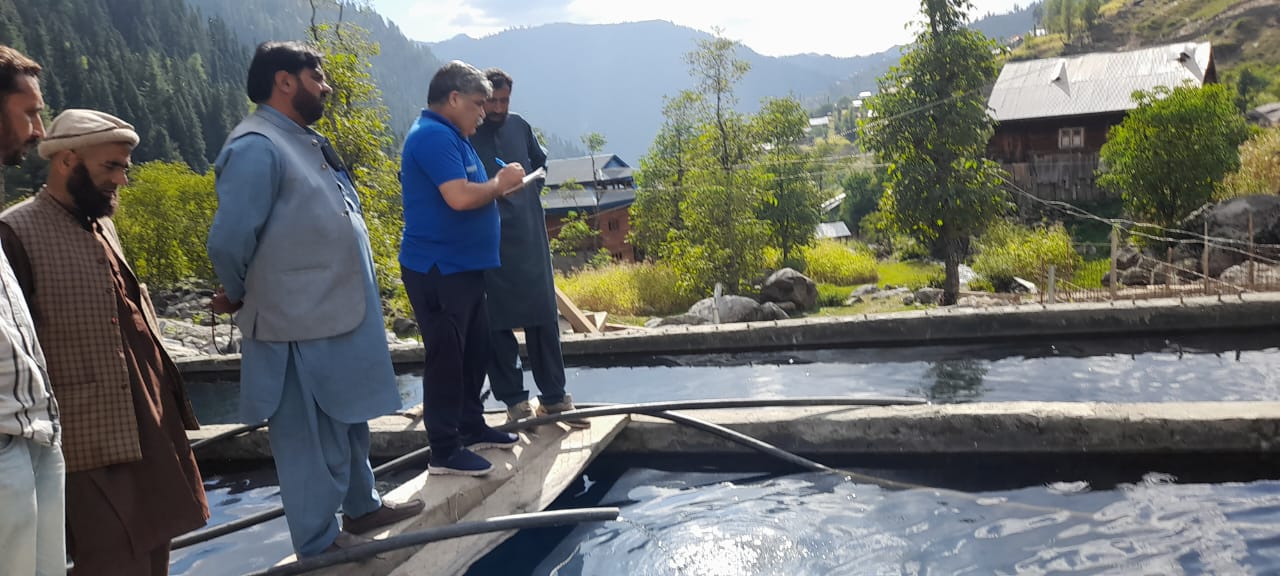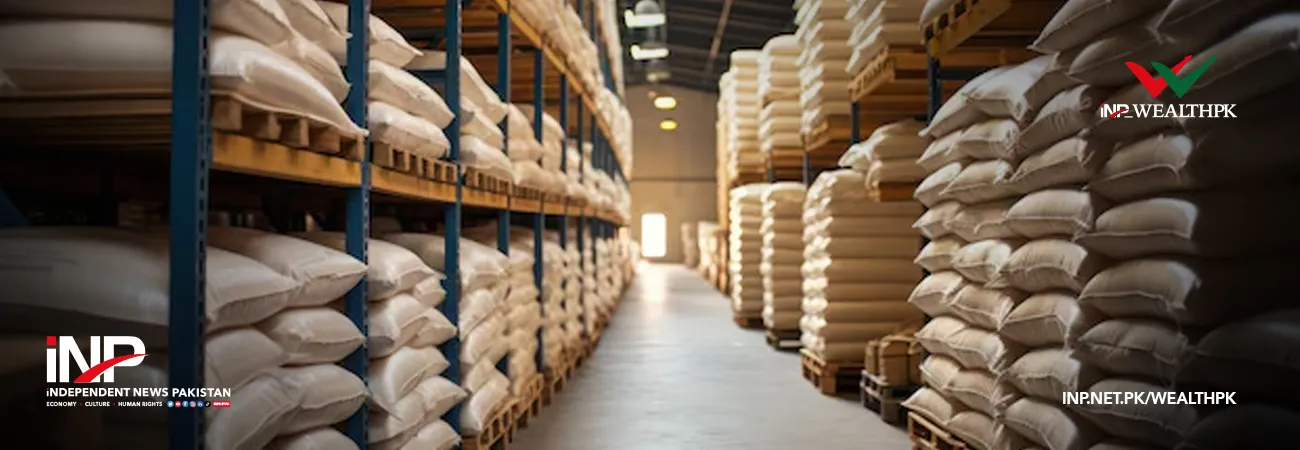آئی این پی ویلتھ پی کے
Azeem Ahmed Khan
A five-year initiative to boost trout farming in Pakistan is nearing completion. Once fully implemented, the project is expected to quadruple trout fish production and provide livelihoods to rural populations in remote mountainous regions.

Tanveer Zaman, Project Manager of the Promotion of Trout Farming in Northern Areas of Pakistan, shared these views with WealthPK. According to Tanveer, trout production will rise from 600 to 2,390 metric tons annually, while seed production will jump from 3 million to 13 million. The project will directly benefit at least 1,000 people.
The initiative focuses on developing infrastructure to enhance quality seed production, supporting private sector trout farm setups, and promoting cage culture technologies, he said. It also aims to build capacity through training, strengthen the value chain, and improve service delivery in both public and private sectors, he added.
The Rs2.36 billion project is jointly implemented by the Fisheries Development Board, the Department of Fisheries Khyber Pakhtunkhwa, the Department of Wildlife and Fisheries Azad Jammu and Kashmir, the Fisheries Department Gilgit-Baltistan, and the PARC-Mountain Agricultural Research Centre in Juglote. Currently, Pakistan produces two trout varieties: Rainbow (farmed) and Brown (wild).
As part of the project, three new species – Lake Trout, Brook Trout, and Golden Trout – have been introduced from Italy with an import of 200,000 seeds in Gilgit-Baltistan, Tanveer said. Despite suitable agro-climatic conditions, he said, Pakistan’s trout output has historically lagged behind countries like Iran and Turkey.
Globally, trout production is approximately one million metric tonnes, with Iran accounting for 20% of this total, he added. Significant improvements began in 2012-13 in Pakistan when local extruded floating feed became available, he said. “This innovation reduced mortality, shortened culture periods, and improved profitability for farmers.”
However, Tanveer Zaman noted that Pakistan's trout is currently not competitive for export due to high production costs, driven largely by imported feed ingredients. Trout, which naturally swims against currents, can tolerate temperatures up to 16°C, and its optimal growth occurs in cooler waters. It typically takes about 18 months for trout to reach its marketable weight of 250 to 300 grams from an initial 50 grams.
Farm-raised trout grows faster than wild trout, especially after the initial nursing stage, he told WealthPK. The trout farming project, launched in 2019, initially aimed to establish 287 private farms in Khyber Pakhtunkhwa on a 50-50 cost-sharing model, upgrade 127 existing farms in Gilgit-Baltistan, and set up 73 new ones.
However, the project has surpassed expectations, with 450 new farms now established in Gilgit-Baltistan. In Azad Jammu and Kashmir, 30 new farms have been planned, of which 24 are currently operational, he said. A Cold Water Fisheries Research and Training Centre is also planned in Madyan, Khyber Pakhtunkhwa, Tanveer said.
Two cold storage facilities in Gilgit-Baltistan – Ghizar and Skardu – will be operational by December, enabling freezing at -45°C for long-term storage and easier transportation of trout, Tanveer said. Infrastructure at 21 hatcheries across Khyber Pakhtunkhwa, Gilgit-Baltistan, and Azad Kashmir has been renovated, addressing issues like outdated raceways and water channels.
Additionally, four new hatcheries have been set up: two in Gilgit-Baltistan, one in Mansehra, and one in Azad Kashmir, bringing the total to 25, he added. Moreover, two Russian experts have trained around 85 individuals – both farmers and government officials –through 15-day sessions in Swat and Skardu on trout farming, he said.
While trout farming in Azad Kashmir was minimal in 2019, around 24 farms are now operational there due to the project, Tanveer said, adding that the 2022 floods caused significant damage to trout breeding efforts in Swat and Madyan in Khyber Pakhtunkhwa. Trout is typically found in Swat, Madyan, Dir, Chitral, Gilgit, Astore, and Birgal Valley in Ghizar District.
Trout farming depends on cold spring or stream water, with river water used as a backup source, he added. Warm areas without spring water are unsuitable for its cultivation, yet warming waters from climate change are also impacting its habitat, he said. Continuous cold water flow is essential for oxygenation, with inlet and outlet systems ensuring circulation to meet trout’s high oxygen demand, he said.
Trout, priced between Rs2,000 to Rs3,000 per kg, is mostly consumed by tourists at the farm gate due to its low production volume and distinct taste. Farming is done in flow-through concrete raceways (10x50 feet with 4-foot depth), each capable of holding about 500kgs or 2,000 fish, Tanveer added. The number of raceways depends on land, water, and financial capacity. Owing to trout’s carnivorous nature, segregation is done every 15 days to separate different sizes, he said.
Credit: INP-WealthPk












